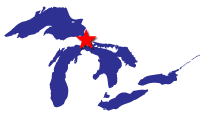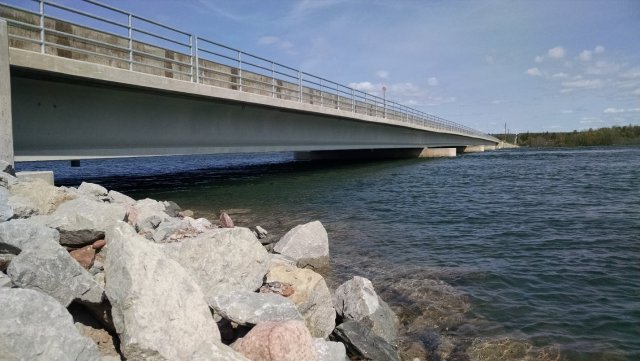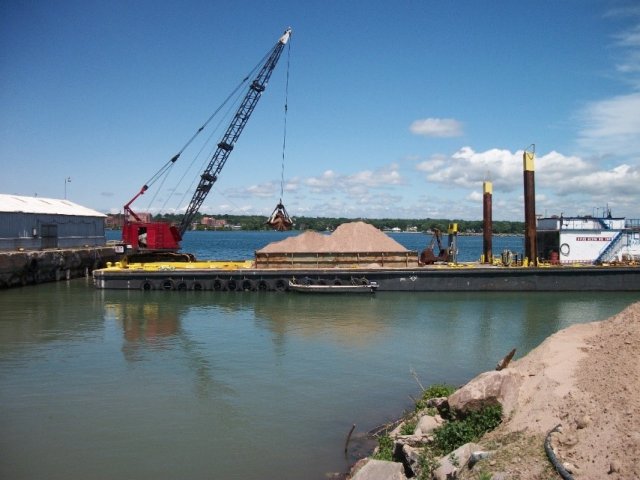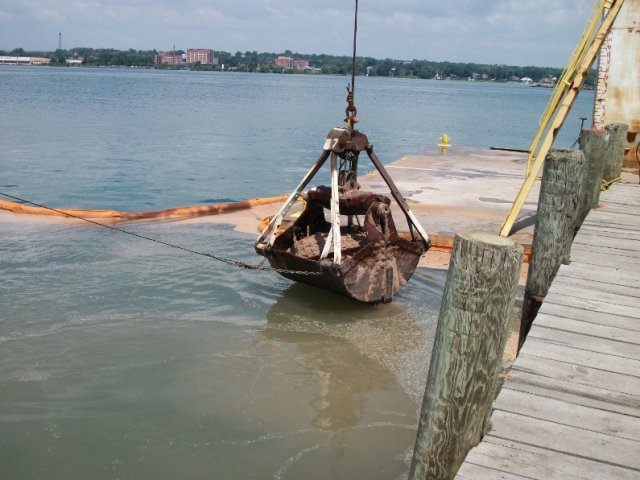St. Marys River AOC
Heather Williams
(Williams.Heather@epa.gov)
312-886-5993
Latest News
Fish Tumor Evaluation Underway
As part of the Fish Tumors or Other Deformities Beneficial Use Impairment, Michigan’s Department of Environment, Great Lakes, and Energy (EGLE) is performing a fish liver tumor study in the St. Mary’s River AOC. In 2023, over 100 brown bullhead catfish were collected from three sites on the U.S. side of the AOC. The target age of each fish was a minimum of three years (or at least 250 mm in length for field determination) with no maximum age limit, as determined by examination of their otoliths. The livers of each individual were evaluated for the presence of cancerous liver tumors. If lab results indicate a cancerous liver tumor rate in five percent or less of the individual fish examined, the Beneficial Use Impairment may be considered restored. Final results from the study are expected in early 2024.
Overview
The St. Marys River Area of Concern is one of the 31 U.S.-based AOCs across the Great Lakes and was designated an AOC under the 1987 Great Lakes Water Quality Agreement. The St. Marys River is a globally unique river that forms the binational connecting channel between Lake Superior and Lake Huron, two of the largest freshwater systems in the world, with shared jurisdiction between the Canadian province of Ontario and the state of Michigan.
Both the Michigan and Canadian communities have strong tourism-based economies that are centered on sport fishing and other recreational activities on the St. Marys River.
As a result of industrial and municipal discharges, sediment was contaminated with various toxic chemicals, suspended solids, metals, and polycyclic aromatic hydrocarbons (PAHs). Along with industrial and municipal discharges, pollutants in the AOC also came from tannery operations, a steel mill, wastewater treatment discharges, combined sewer overflows, and various nonpoint sources.
Beneficial Use Impairments
Successful interim cleanup and restoration work is removing Beneficial Use Impairments (BUIs). BUIs are designations given by the International Joint Commission representing different types of significant environmental degradation. As cleanup work is completed, and monitoring demonstrates enough environmental health improvements, BUIs can be removed. The list below shows which BUIs have been removed, and which remain. Once all BUIs are removed, the process of delisting the AOC can begin.
- Degradation of Aesthetics – Removed January 2014
- Bird or Animal Deformities or Reproduction Problems – Removed March 2014
- Restrictions on Fish and Wildlife Consumption
- Eutrophication or Undesirable Algae – Removed December 2017
- Degradation of Fish and Wildlife Populations - Removed September 2019
- Beach Closings – Removed July 2016
- Degradation of Benthos
- Restrictions on Dredging Activities – Removed November 2018
- Loss of Fish and Wildlife Habitat - Removed September 2019
- Fish Tumors or Other Deformities
General information about BUIs: Beneficial Use Impairments for the Great Lakes AOCs
Remediation and Restoration Work
EPA has continually worked with federal, state, and local partners to execute remediation and restoration work in the area with the goal of removing the AOC designation. St. Marys River has completed all on-the-ground work necessary for delisting.
Restoration Project Highlight: Little Rapids Restoration Project
The Great Lakes Commission in 2013 received Great Lakes Restoration Initiative funding through its regional partnership with the National Oceanic and Atmospheric Administration to begin the construction of a new bridge to replace an old causeway crossing the river. This bridge allowed for the restoration of a historic rapids habitat by allowing the river water to flow freely. Rapids habitat is vital to fish spawning and invertebrate reproduction necessary for the food web to remain intact. The Lake Superior State University’s Aquatic Research Laboratory and the Michigan Department of Natural Resources conducted ecological monitoring on aquatic species before and after construction.
This restoration project provides environmental, community and economic benefits. The bridge provides a safer, more aesthetically pleasing way for community members to walk and bike. It also boosts the Sault Sainte Marie’s tourism-based economy by restoring a habitat that contributes heavily to recreational and sport fishing. This project was the final step required on the U.S. side of the St. Marys. River in order to remove the Loss of Fish and Wildlife Habitat and the Degradation of Fish and Wildlife Populations BUIs and, eventually, delist the St. Marys River as an AOC.
More information about the Little Rapids Restoration Project.
This restoration project provides environmental, community and economic benefits. The bridge provides a safer, more aesthetically pleasing way for community members to walk and bike. It also boosts the Sault Sainte Marie’s tourism-based economy by restoring a habitat that contributes heavily to recreational and sport fishing. This project was the final step required on the U.S. side of the St. Marys. River in order to remove the Loss of Fish and Wildlife Habitat and the Degradation of Fish and Wildlife Populations BUIs and, eventually, delisting the St. Marys River as an AOC.
More information about the Little Rapids Restoration Project.
Restoration Project Highlight: Consumers Energy Manufactured Gas Plant Cleanup Project
In 2010 the Great Lakes Legacy Act, with local matching funds provided by Consumers Energy, funded a major sediment cleanup project in the St. Marys River at a former manufactured gas plant (MGP). Some 26,000 cubic yards of sediment contaminated with PAHs were removed from the area. PAHs are chemicals found in coal, crude oil, and gasoline and can have negative effects on human and animal health. These chemicals do not dissolve easily in water, but instead tend to stick to the sediment settling at the bottom of lakes and rivers.
After removal of the contaminated sediment, a 9-inch layer of sand was used to cover and contain any residual contamination with the intent to provide a cleaner, healthier habitat for fish and wildlife. This site was deemed one of the last areas of significant contamination on the U.S. side of the St. Marys River and played an important role in the removal of the Restriction on Dredging Activities, and the Bird or Animal Deformities or Reproduction Problems BUIs.






